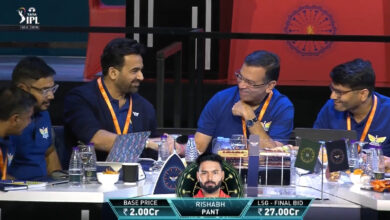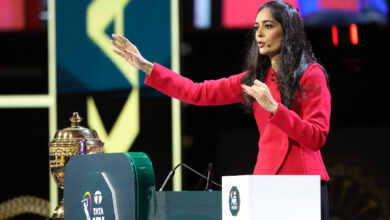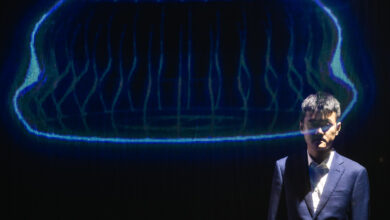Novak Djokovic, the tiebreaker king and the clutch Ninja who knows how to win

The first set in the French Open final was hurtling along towards its climax. Casper Ruud wasn’t content playing the bit-part but seemed intent on being the star of the night. Then, came the tie-breaker and Novak Djokovic showed why he is the Grand Slam boss. Ruud was the better player up until that point, hardly putting a foot out of place, but Djokovic slam-dunked him 7-1 in the tiebreaker, with five winners, and swept the match in straight sets. The tie-break king was at it again. Yet, Ruud had made a promising start at the tiebreaker. He made a smart first serve, finding depth and cutting angles with his remarkable forehand, and looking the physically fitter player.And then, just as he felt he had Djokovic right where he wanted him hitting a vicious forehand crosscourt, Djokovic did what he does best – finding extra inches of speed and extra amps of power to slap back a running forehand down the line and steal the point. Television cameras pointed to his box that celebrated in acknowledgment of what was going to happen next.
Tiebreakers are messy business. Best of five set tennis is full of momentum swings but tiebreakers – seven-point shootouts at six games apiece – can be make-or-break when it comes to a player’s rhythm. Add the jeopardy of a Grand Slam final and nerves can be nearly impossible to manage. In those moments, truly great players are able to maintain their level. It is a mark of Djokovic’s greatness that he holds the innate ability to actually raise his levels then. Rather than playing it safe, his understanding of how to get on top of a player and find the low-margin angles and low-percentage shots never fails to thrill.
Despite being long banned from the US and other countries over his refusal to submit to COVID vaccination, Novak Djokovic just won his 23rd Grand Slam title at the French Open, earning him the greatest record in men’s tennis hory.pic.twitter.com/8DiivIa2x3
— Michael P Senger (@michaelpsenger) June 11, 2023
https://platform.twitter.com/widgets.js
When Djokovic sucker-punched Federer in the tiebreaker
The Norwegian, who lost his second successive French Open final and third Grand Slam final despite reaching that stage of the last five Majors, might find some solace in the fact that Djokovic has done this to the all-time greats.
The Serb’s most narrative-rich and dramatic Major final remains his comeback victory at Wimbledon in 2019. Taking on Roger Federer, 38 at the time, in what had the potential to be a crowning moment on his favourite hunting ground, he was not only opposing Federer but a raucous crowd to see hory.
Federer played as impeccable final as he could. He won 36 (!) games, didn’t face a single break point for the first three sets, won more points and games, won more points on serve and return, won 94 winners compared to Djokovic’s 54. And he lost. He won at least six games in each of the five sets and lost. Three of those went to tiebreakers, Djokovic’s domain, where the Serb was able to do what he always does – lift his level just enough, not more or less, to outlast his opponent.
The match ended in Wimbledon’s first-ever final set tiebreaker, that came about at 12 games all. Prior to that, after the match had already gone over the dance, Federer had held two match points on serve. After an unforced error, he looked set to win on the next point, when he played a huge serve and a smart inside-in forehand to finish the point at the net. Djokovic responded with an unanswerable angled crosscourt forehand, won the game, and took it the dance.
It was whiplash for Federer, who had faced an eerily similar situation when he held two match points against Djokovic at the 2011 US Open semifinal, a match he led two sets, and lost. Casper Ruud was 13 years old when that match took place.
It is Djokovic’s hallmark that he is able to produce this fury at a point when his opponent is most likely to wilt.
Novak Djokovic kisses the trophy as he celebrates winning the men’s singles final of the French Open. (PHOTO: AP)
It is a static worth repeating that Djokovic has won each of his six tiebreakers at the French Open without making a single unforced error in 55 points. During his Australian Open triumph this year, 12 months on from his humiliating deportation from the same country, he won three out of four breakers, including two in the final.
This is supernatural greatness playing out on the grandest stage. This is not just aura or technique or power, but a mastery that requires oneness with the body and mind at a level never seen before, a control required over the backlift of one’s forehand just as much as over one’s breathing patterns. That Djokovic has been producing it for over a decade and a half is the purest mark of his greatness.
In the aftermath of his Roland Garros triumph that gave him a 23rd Grand Slam and at least three titles on each of the four varied Major tournaments, there will be think pieces written and social media rumblings on how numbers do not define greatness. They don’t. The GOAT debate remains as arbitrary as ever because sentiments will always be attached to style, not silverware.
That Djokovic is the greatest does not have to do with aesthetics or titles, but his near-perfect mastery of the big moments, on any surface, against any opponent, at almost all stages of his career. In the years to come, it will be something to say we have seen the clutch master at work.







